About data cubes
Data cubes give users a framework for exploring data. They also serve as the building blocks of dashboards. They let you explore, slice and dice your data by dimensions and measures.
For example, the following data cube displays a heatmap visualization representing Wikipedia edit data. It filters data by Latest Day and Language not English, and shows data for the Language and Time by Hour dimensions.
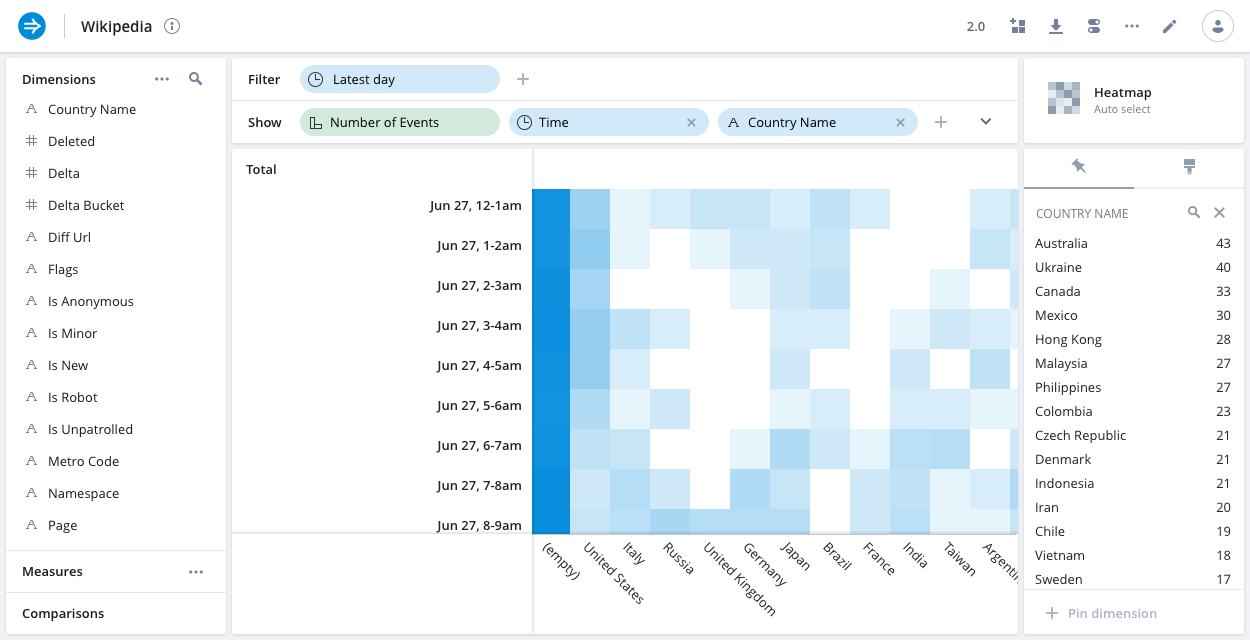
Exploring data cubes
Data cubes are designed to be explored quickly. Use filters to focus on a specific part of your data. It could be a period or time, a certain country or a number of countries, or any other segment of a dimension in your data.
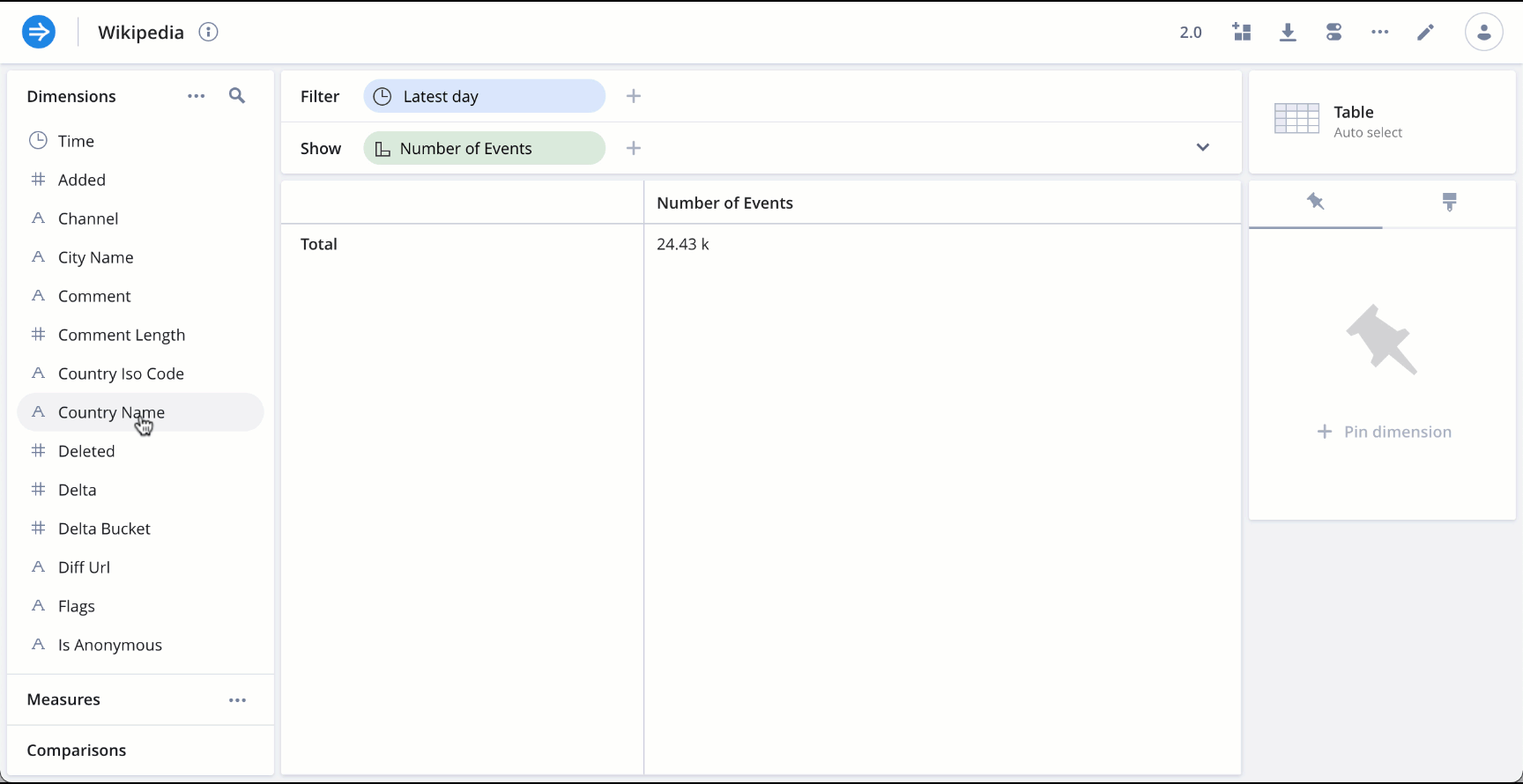
You can filter on time and select a filter that is relative to the most recent time of the data or select a specific time range.
You can exclude certain dimensions or select only the values that contain a certain text (or match a regular expression).
When you have many values you want to add as filters, you can also copy and paste them by clicking the ellipses (...) in the bottom left of the filter menu:
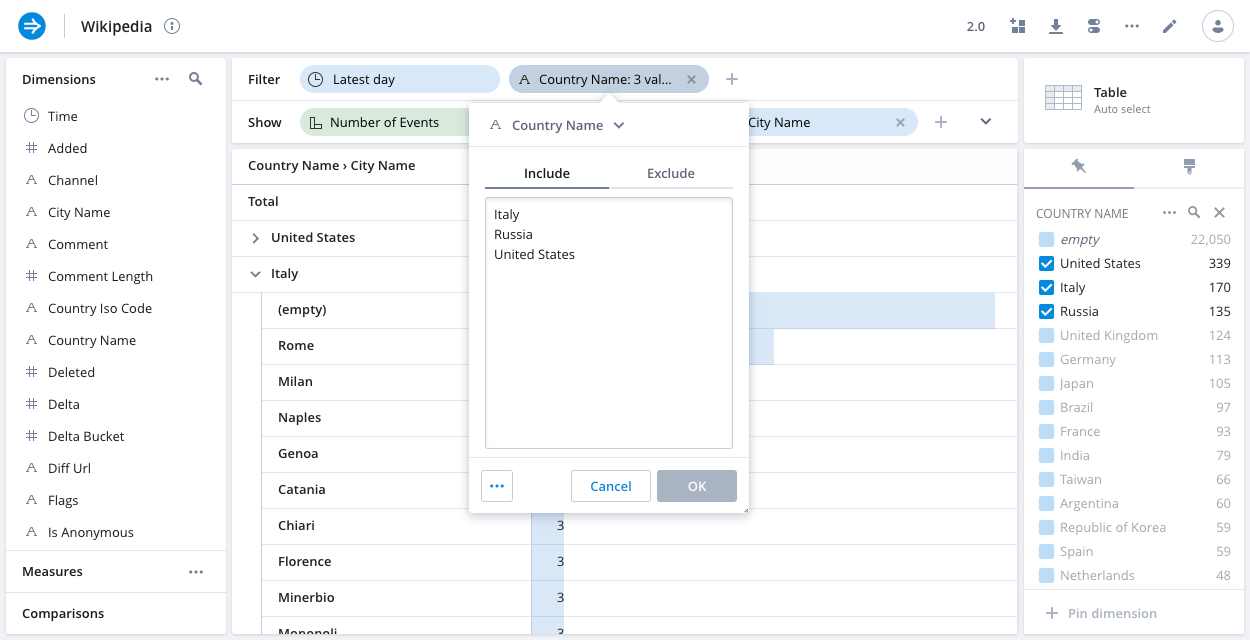
In the dialog that opens, paste and save the values you want to add as filters. Specify whether you want to include or exclude the values that you paste. The default is to include. Enter one value per line.
Data cubes are dynamic and often backed by streaming data that has frequent, high-frequency updates.
You can adjust how often Imply polls for data updates from the data toggles menu on the header bar as shown below.

All time-based calculations performed within Imply are timezone-aware. In the same dialog, you can select your desired timezone if different from the default, UTC.
To see whether these results are typical or how they change over time, use the comparisons feature. To compare this week to the previous one, drag Previous period in the Comparisons section of the left sidebar to the show bar:
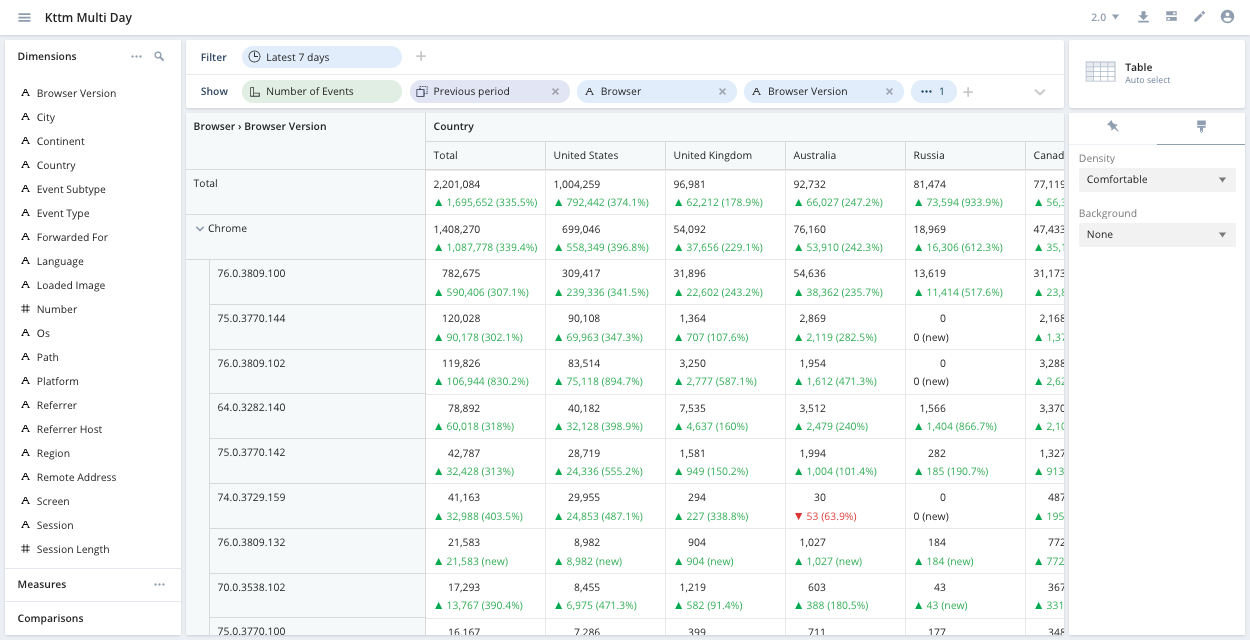
Access a data cube
To access a data cube, from the Imply home page, click the name of the data cube in the left column.
Filters
In the data cube view, notice the filter bar at the top. You can filter by a dimension or measure and refine the results further by selecting a filter method:
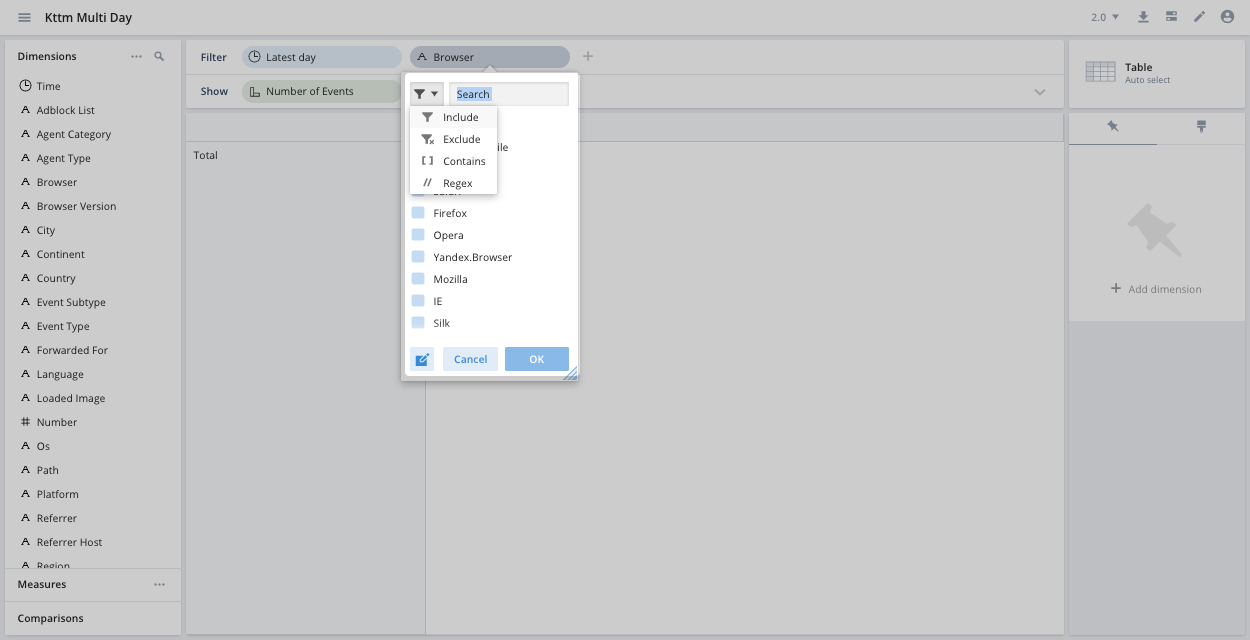
The filter methods are as follows:
- Include: Includes the selected value.
- Exclude: Excludes the selected value.
- Intersect: Includes all selected values. Applies to multi-value dimensions only.
- Contains: Contains the specified text.
- Regex: Matches the specified regular expression.
Multi-value dimensions
If you filter on one or more values in a multi-value dimension and select Include or Intersect, only your selected values appear in the results list. Uncheck the box Hide filtered-out values to display all values.
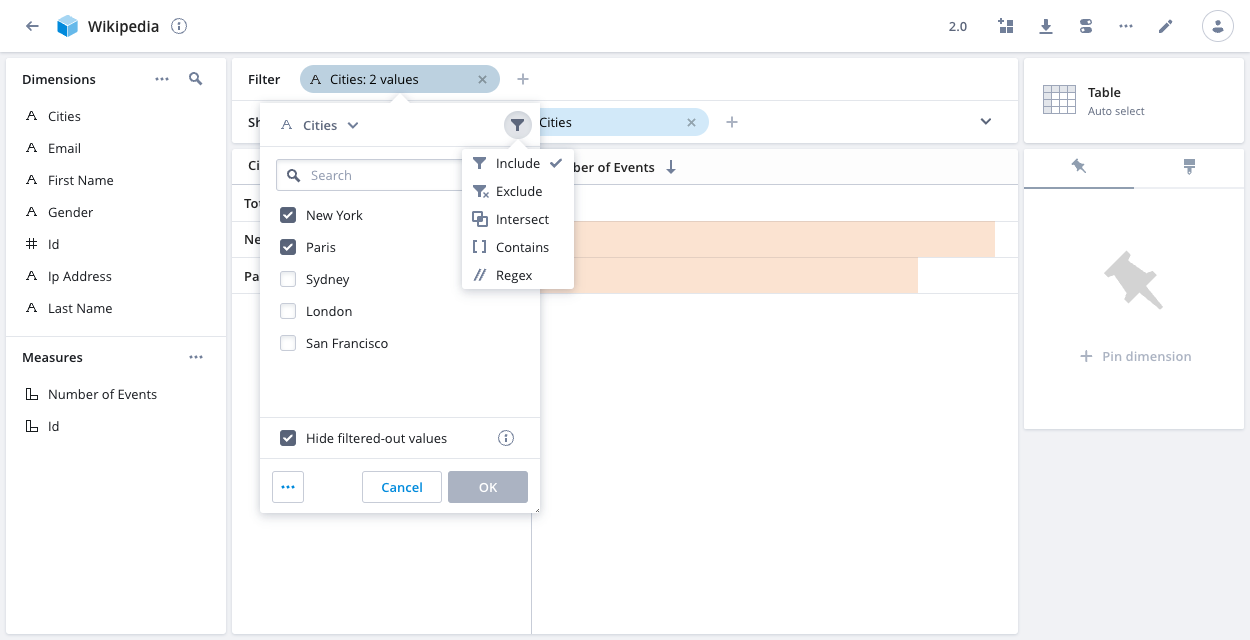
IP dimensions
If you filter on an IP or IP prefix dimension, the following filter methods are available:
- Search: Search for a single IP address or an IP prefix.
- Match: For an IP dimension, enter a complete IP prefix—for example,
192.0.1.1/16.
For an IP prefix dimension, enter a complete IP address—for example,2001:db8:3:4:5:6:7:8. - Include: Start typing an IP address or IP prefix. Pivot displays matching values and you can select one or more values to include.
- Exclude: Start typing an IP address or IP prefix. Pivot displays matching values and you can select one or more values to exclude.
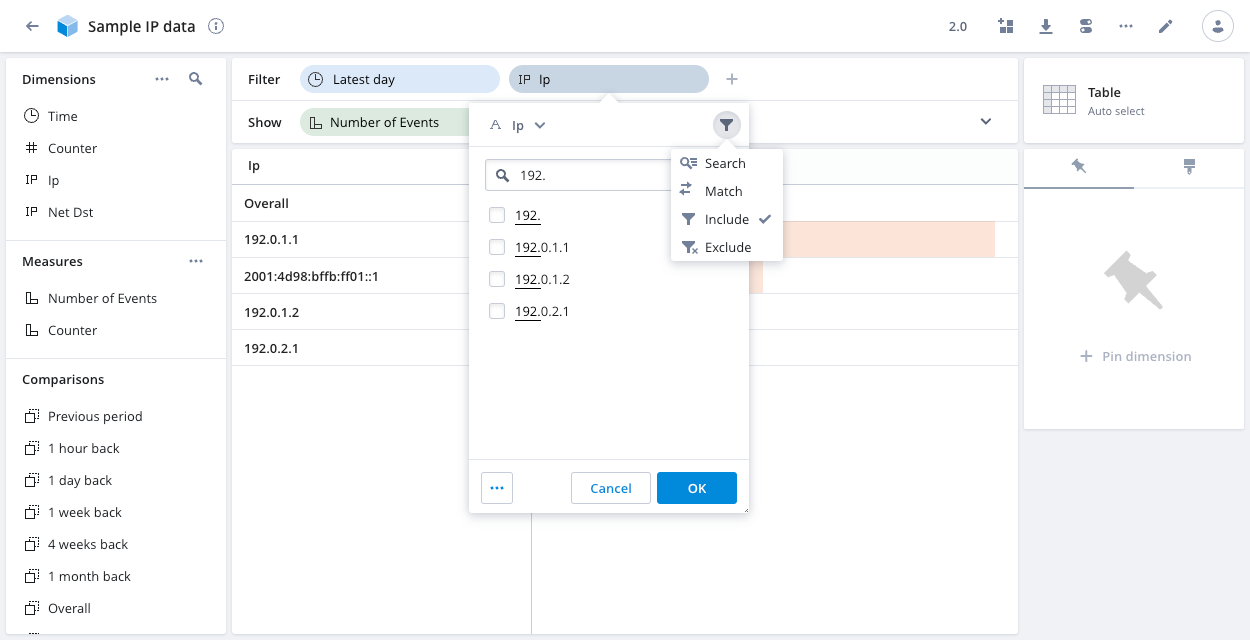
Pivot constructs all IP filters using the Druid IP_MATCH and IP_SEARCH functions. See the Enhanced IP support feature documentation for information on these functions.
Nested columns
If your data cube contains nested data, you can filter on the nested data. The following example filter displays products with color olive in the nested Details column:
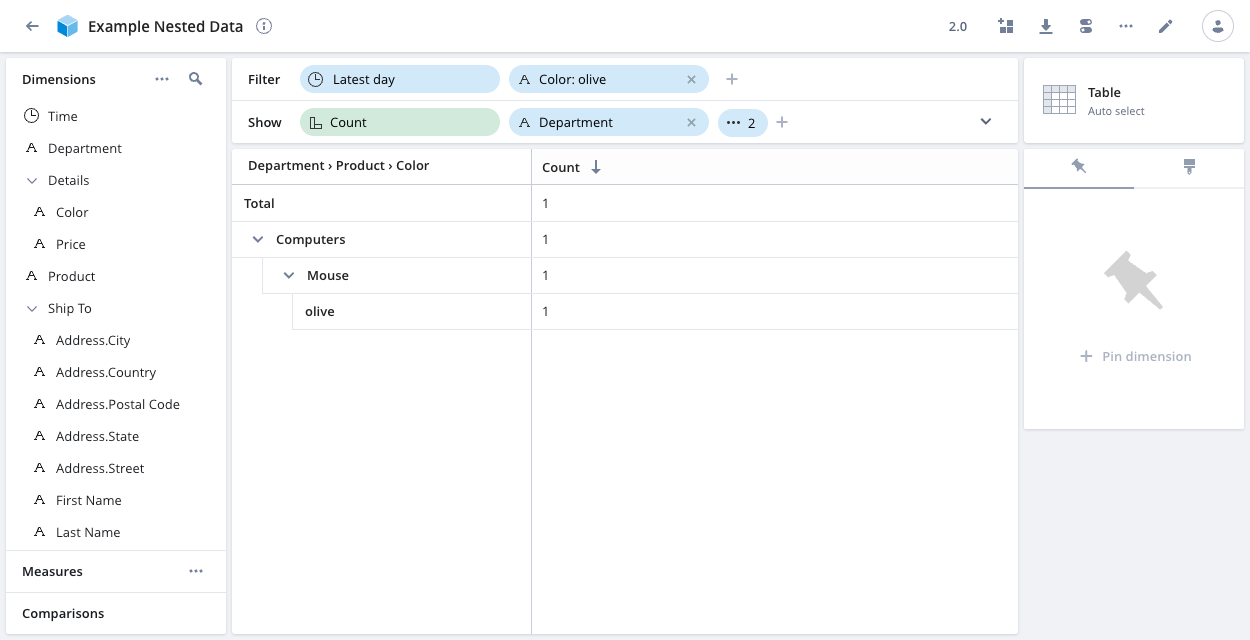
See Nested columns for information on ingesting nested data and Managing data cubes for details on creating a data cube for your nested data.
Dimensions and measures
Add dimensions, measures, and comparisons that you want to see to the show bar under the filter.
The left sidebar contains all of the data cube's dimensions and measures. You can add any of them to a visualization by dragging them to the show bar. Alternatively, you can click on anything in the left sidebar and select an option:
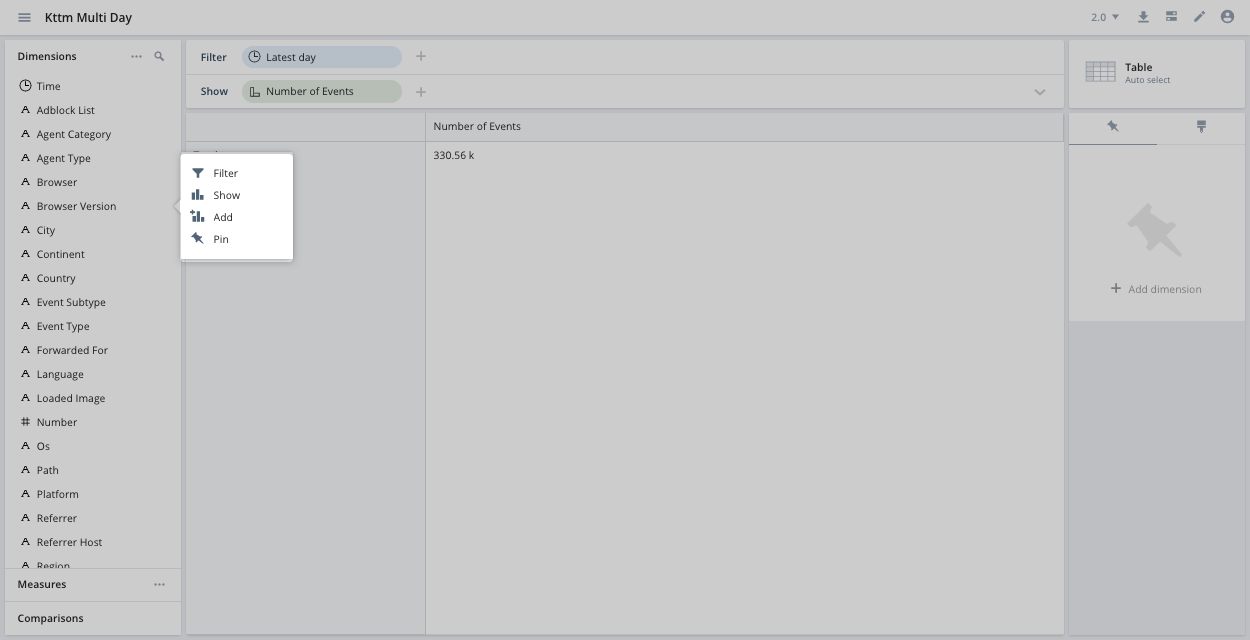
Visualizations
Use the Visualize menu on the right side of the page to select the type of visualization you want to use:

For a description of each of the visualization types, see Visualizations.
Pin a dimension
Use the pinboard panel at the right to pin a dimension and quickly filter the view based on values of that dimension.

Format a visualization
Use the paintbrush icon to format certain aspects of your visualization. The paintbrush formatting options change depending on your visualization type. In the table view, for example, you can add bars or a heat map to help show how much your table's rows differ.